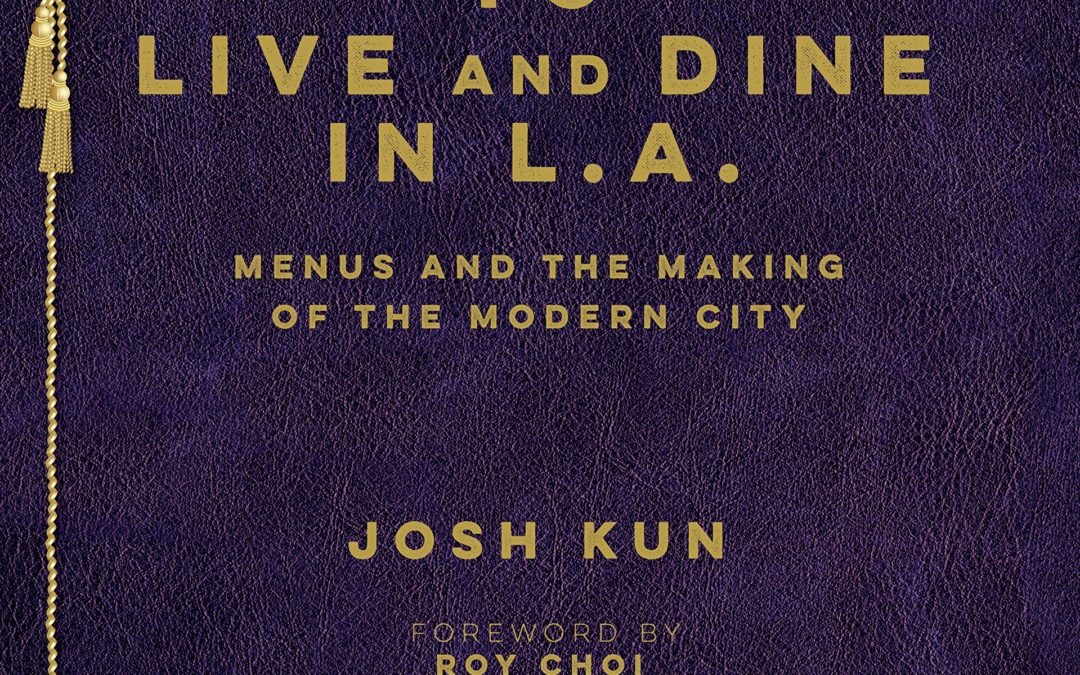
How did Los Angeles become the modern city the world watches? We know some of the answers all too well. Sunshine. Railroads. Hollywood. Freeways. But there’s another often overlooked but especially delicious and revealing factor: food.
Think veggie tacos and designer pizzas, hot dogs on sticks and burgers from golden arches, Cobb Salads and chocolate-topped ice cream sundaes, not to mention the healthiest dishes on the planet. Ask anyone who has eaten in L.A.–the city shapes the tastes that predict how America eats. And it always has.
In its fourth book collaboration with the Los Angeles Public Library and the Library Foundation of Los Angeles, Angel City Press releases To Live and Dine in L.A.: Menus and the Making of the Modern City by Josh Kun.With more than 200 menus–some dating back to the nineteenth century–culled from thousands in the Menu Collection of the Los Angeles Public Library, To Live and Dine in L.A. is a visual feast of a book.
But it’s more. Much more.
In his detailed history, author Josh Kun riffs on what the food of a foodie city says about place and time; how some people eat big while others go hungry, and what that says about the past and now. Kun turns to chefs and cultural observers for their take on modern: Chef Roy Choi sits down long enough to say why he writes “some weird-ass menus.” Pulitzer Prize-winning critic Jonathan Gold looks at food as theater, and museum curator Staci Steinberger considers the design of classic menus like Lawry’s. Restaurateur Bricia Lopez follows a Oaxacan menu into the heart of Koreatown.
The city’s leading chefs remix vintage menus with a 21st-century spin: Joachim Splichal, Nancy Silverton, Susan Feniger, Ricardo Diaz, Jazz Singsanong, Cynthia Hawkins, Micah Wexler, Ramiro Arvizu and Jaime Martin del Campo cook up the past with new flavors. And, of course, the menus delight: Tick Tock Tea Room, Brown Derby, Trumps, Slapsy Maxie’s, Don the Beachcomber, and scores more.
Kun tackles the timely and critically important topic of food justice, and shows how vintage menus teach us about more than just what’s tasty, and serve as guides to the politics, economics, and sociology of eating.
America is a dining-out nation, and our research indicates that L.A. has long been one of its top dining-out towns. The Library’s collection is a living repository of meals past, an archive of urban eating that tells us about the changing historical role of food in the city, which is to say it tells us about just about everything that food touches: economics, culture, taste, race, politics, architecture, class, design, industry, gender, to name just some of the themes that recur on menu pages.
Kun challenged contributors to tackle subjects that readers may have never contemplated. As the renowned L.A. chef Roy Choi points out in his Foreword to To Live and Dine in L.A.:
The more I looked at the menus, the more they told me about the city and how neighborhoods developed. But it was the menus that I couldn’t find that forced me to ask questions about how life really was. I started to think about how the city is now and if those missing menus were a reflection of life just as it is now. Were these menus of the affluent and middle-class? Were the working classes even eating with menus, or were they mostly eating at stands and carts? Were there disparities and access problems just like today? To Live and Dine in L.A. is the first book of its kind–the definitive way to read a menu for more than just what to order. It’s about how to live. And how to dine. In L.A.
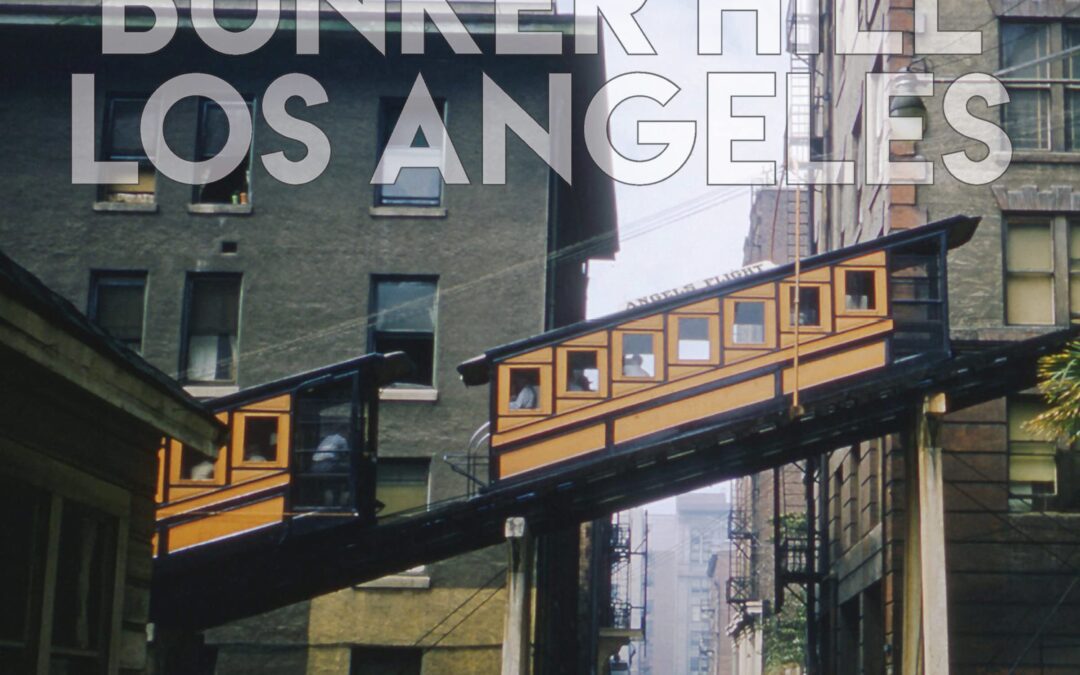
Bunker Hill is the highest point of downtown Los Angeles, both literally and figuratively. Its circle of life has created a continuous saga of change, each chapter rich with captivating characters, structures, and culture. In Bunker Hill Los Angeles: Essence of Sunshine and Noir, historian Nathan Marsak tells the story of the Hill, from the district’s inception in the mid-19th century to its present day. Once home to wealthy Angelenos living in LA’s “first suburb,” then the epicenter of the city’s shifting demographics and the shadow and vice of an urban underbelly, Bunker Hill survived its attempted erasure and burgeoned as a hub of arts, politics, business, and tourism.
As compelling as the story of the destruction of Bunker Hill is―with all the good intentions and bad results endemic to city politics―it was its people who made the Hill at once desirable and undesirable. Marsak commemorates the poets and writers, artists and activists, little guys and big guys, and of course, the many architects who built and rebuilt the community on the Hill―time after historic time.
Any fan of American architecture will treasure Marsak’s analysis of buildings that have crowned the Hill: the exuberance of Victorian shingle and spindlework, from Mission to Modern, from Queen Anne to Frank Gehry, Bunker Hill has been home to it all, the ever-changing built environment.
With more than 250 photographs―many in color―as well as maps and vintage ephemera to tell his dramatic visual story, Marsak lures us into Bunker Hill Los Angeles and shares its lost world, then guides us to its new one.
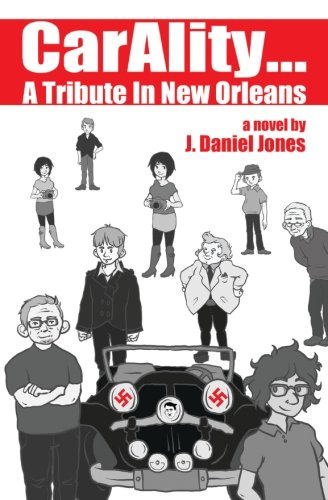
Antoine “Andy” Guidry is a down on his luck cable TV producer living well beyond his means in San Diego, CA.
He had risen through the ranks of camera op, field producer, and senior producer until he finally jumped ship and developed his own show… burning more than a few bridges on the journey. When his show was abruptly cancelled, it left him with little more than maxed out credit cards, severely overdue bills, and an increasingly virulent cannabis vaping habit.
Unsuccessful at trying to drum up work from former “once bitten-twice shy” associates, he is forced to sell his most treasured possession, a 1968 Porsche 911T Targa. Needing the money as soon as possible, he selects the next classic car auction he can find, A-Bears Classic Car Auction in New Orleans, LA. Being a Louisiana native, it feels like he’s returning home and starting all over again. At his age, that’s not a good thing.
Through an unforeseen twist of fate, he finds he is now the only TV producer on the planet with access to the coup of the auto auction universe. A previously undiscovered Mercedes-Benz 770K Grosser Tourenwagen, purportedly used by Adolf Hitler, is also being sold in the same auction as Andy’s cherished 911, and with about as much advance publicity.
Unfortunately, the consigner not only has no interest in television coverage, he’s actually banned it. He claims it’s due to the nature of the provenance, which may be as, or even more valuable than the car itself.
If he can find a loophole that will let him actually cover the auction, this could put him back in the game. He just needs to develop a concept, pitch it, get some front money, field a crew, sneak ’em in, and cover the classic car auction event of the century. Sure, it sounds a bit daunting. But he does, after all, have three whole days to pull it off.

There is something unique about Southern California’s San Fernando Valley.
Whether it’s the Valley Girl cliché, the host of movie and television stars and studios that call “The Valley” home, or a whole sun-kissed lifestyle, there is no doubt that nearly everyone is fascinated by this area of nearly two million people.
North of Mulholland: Essays from the San Fernando Valley Business Journal looks at life in this unique part of the world in a series of essays that take on everything from strip malls to Countrywide Home Loans; from the Los Angeles Times to technology; and from Los Angeles’ City Council to living up the street from Michael Jackson’s family compound. Written in an Andy Rooney-type conversational style, North of Mulholland captures the lifestyle and the foibles of the contemporary Valley as seen through the eye of a long-time resident businessperson and community leader.
Los Angeles City Councilmember Dennis P. Zine said of the book: “North of Mulholland is clearly written by someone who truly understands the San Fernando Valley. This collection of essays by my friend and civic leader Marty Cooper is entertaining, informative, and insightful.”
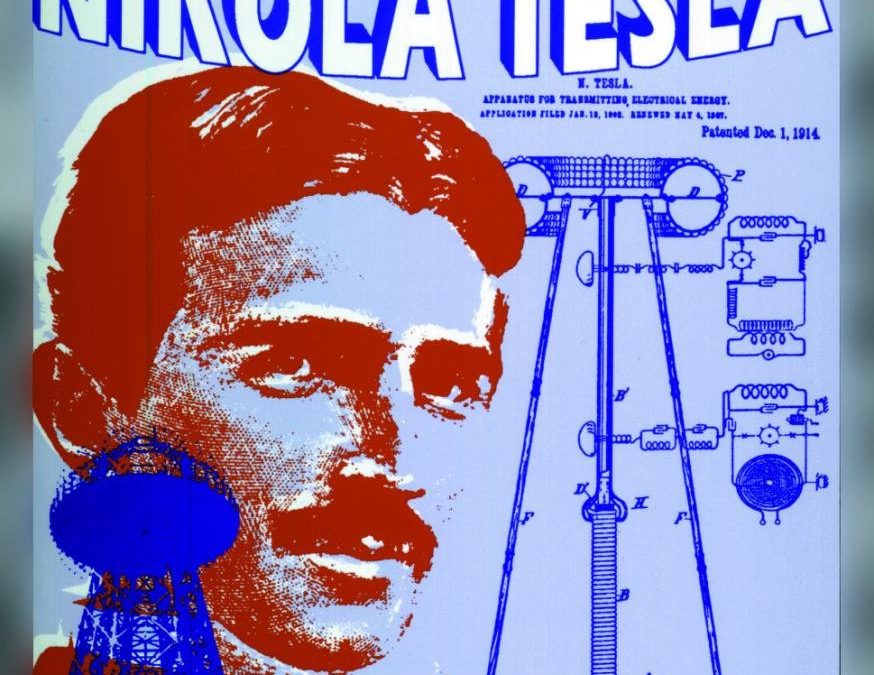
Nikola Tesla’s Electricity Unplugged is a unique anthology of hand-picked Tesla articles, arranged historically, which presents overwhelming and convincing evidence for the reality of Tesla’s high efficiency, low cost wireless power transmission. Following in the footsteps of the editor’s first book in the series, Harnessing the Wheelwork of Nature, Dr. Tom Valone’s book chronologically traces the original intention that Nikola Tesla had for his wireless electricity and how he updated and expanded upon it later on, with reprints of his key articles, to the recent genius engineers and physicists who are now finally bringing this last and most elusive, highly advanced Tesla technology into reality. The Corum article (along with the Peterson article) on the Zenneck wave transmission experiments culminates the viewpoints of all of the book’s contributors. Its purposeful placement as the last chapter of the book, is because this exclusive article publication is a major scientific breakthrough, as testified by the book’s endorsement from Brigadier General Michael Miller, and foretells the understandable, visionary road to the corporate formation of wireless power utilities. Furthermore, this is the first and only book in the world which explains how an electromagnetic wave traveling across the electrically conductive surface of the earth, was predicted by Tesla and Zenneck (two pictures in the book show them together on pages 74 and 381) and why it is the essential missing link of any Tesla wireless transmission theory. Many of the contributors also nicely explain the “surface wave phenomenon” as well as “resonant earth-ionosphere” modes of electrical transmission without wires that compliments the surface wave theory and experiment. Nikola Tesla’s Electricity Unplugged therefore is a treasure compared to any other Tesla reference book currently in print, since it is jam-packed with personal stories of Tesla, such as one reprinted from the prestigious Smithsonian magazine, along with great illustrated slideshows adapted for the book format, the “secret” history of Tesla’s wireless, the real Tesla electric car, high Q resonant power transfer examples being used today by Qualcomm, “Tesla unplugged” explained in an easy-to-understand presentation by a Brookhaven National Lab scientist, wireless electricity article based on scalar waves, even including a couple amazing rigorous equation articles with wireless solutions for the tech audience, a unique and evocative Foreword by Nikola Tesla’s last living direct descendant, all presented in a 457-page paperback book, suitable as a college or high school reader, or simply as an eye-opening, optimistic window onto the electrical genius regarded as the “Master of Lightning,” with a priceless collection of nineteen (19) contributors not available anywhere else.
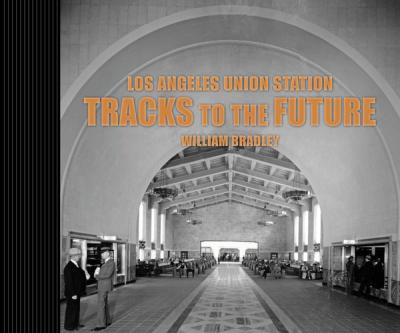
“Los Angeles Union Station- opened May 7, 1939, after days of celebration- was the last great train station built in the United States. Intended as a grand portal to a grand Los Angeles, it was an anomaly, built at a time when America was eager to drive or fly to its chosen destinations. Protected by early inclusion on the National Registry of Historic Places for its iconic architecture, Los Angeles Union Station has had an astonishing and unpredictable rebirth. As the city modernizes its public transportation system linking the culturally and geographically diverse communities Southern California , Union Station-in all its Mission Revival glory-is suddenly the hub of the country’s newest light rail and subway system, serving hundreds of thousands of people each week. . Where Pullman cars and Harvey Girls once served commuters, where the Super Chief and the Coast Starlight, Streamliners and Domeliners converged, Los Angeles Union Station is now a living, breathing center of transportation.
Author William Bradley relates a rich history of fierce battles, cultural relocation, and astounding financial risks culminating in one of California’s most important stories. Augmenting his words with vintage images, Bradley not only shares the tale of the terminal, but of the trains that rode its tracks- those 1939 tracks to the future.
144 pages
150+ rare black and white and color images
12” X 10”
”

Architect John Parkinson died in 1935, and the Los Angeles Times praised him: “Future generations have only to walk through the streets of Los Angeles to be reminded how much John Parkinson in his lifetime contributed to the city that grew up under his hand.” In Iconic Vision: John Parkinson, Architect of Los Angeles, author Stephen Gee proves that this singular visionary created the look of America’s most dynamic metropolis, long before the world recognized the city’s importance. Consider that among more than four hundred buildings in the City of Angels that carried his architectural imprimatur, John Parkinson designed:
- Los Angeles City Hall, the most iconic building in California, the tower that changed a futuristic city’s skyline forever;
- Bullock’s Wilshire, the towering structure that rivals the Chrysler Building as America’s premier Art Deco edifice;
- Los Angeles Memorial Coliseum, the world’s only modern stadium to host two Olympic Games, 1932 and 1984–and still home to the USC Trojans;
- Los Angeles Union Station, the Mission-Moderne-Art Deco masterpiece that brought together California’s railroads and became a legend before the first trains roared in.
Iconic Vision, the first biography of the master architect, documents–in remarkable detail and images–Parkinson’s monumental contributions to the city he loved. Although other architects’ names have become synonymous with the city, John Parkinson designed more landmark buildings in Los Angeles than any other architect, living or dead. And, while other architects may have taken credit for Parkinson’s designs, Stephen Gee’s penetrating biography establishes the truth. He tells the story of a man who envisioned tomorrow.
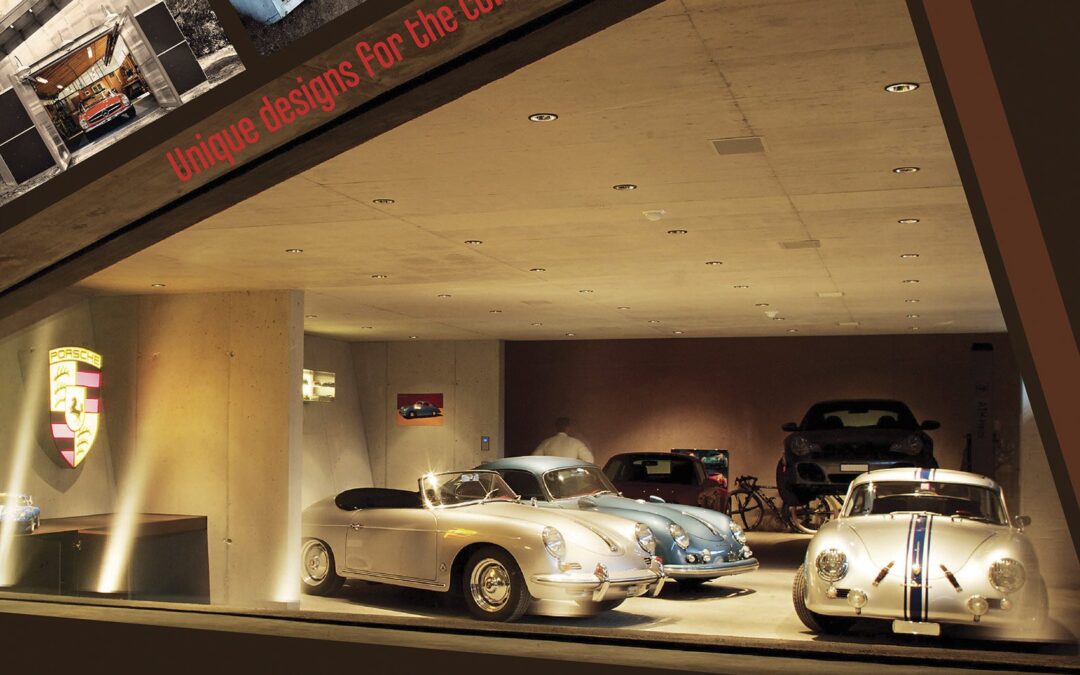
With more than forty international examples of practical yet architecturally fascinating solutions, this one-of-a-kind book shows innovative, beautiful spaces to park your car. From an underground parking garage to a car elevator, and from a contemporary city carport to a “living room garage,” here is a wealth of creative ideas for housing the automobiles you love. Designed for architects, builders, and those who are passionate about their cars, this beautiful idea book provides convincing and outstanding general concepts that can be borrowed to create the perfect housing for your own four-wheeled vehicles whether you live in an urban area, have a challenging home site, or just want to add to your estate. Designs include garages that stand alone and those that are beautifully integrated into single-family homes.
Autobooks-Aerobooks 2900 W. Magnolia Blvd. Burbank, CA 91505 (818) 845-0707 Hours: Tuesday-Friday 10:00 AM – 6:00 PM Saturday 10:00 AM – 6:00 PM Closed Sunday and Monday Accept Credit Cards gift cardYES, We have Gift Cards - Click Here AUTOBOOKS IS OPEN...










